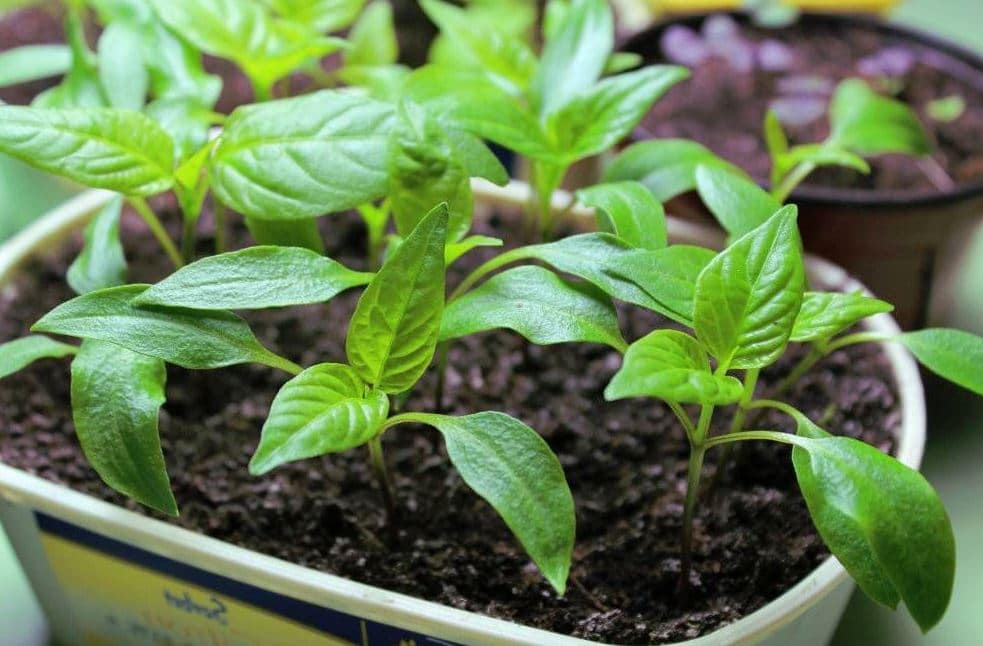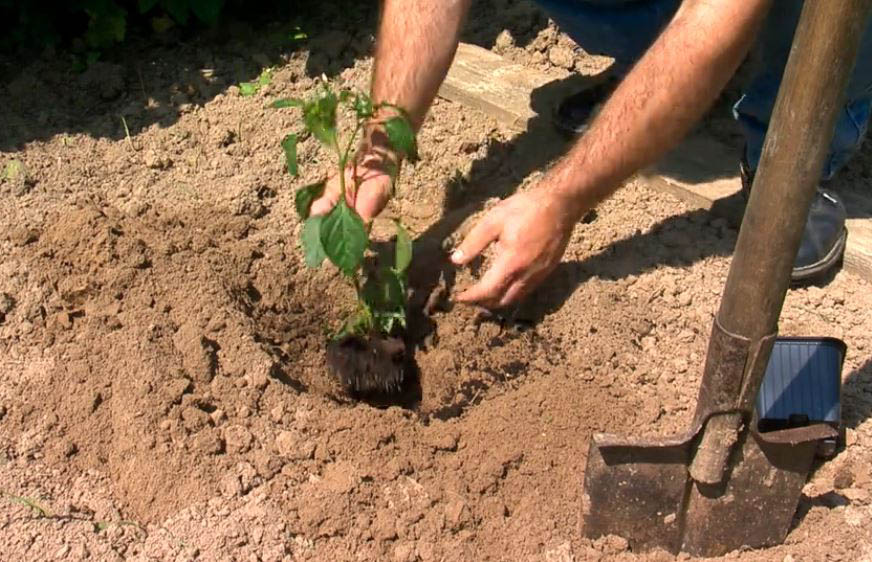When to sow cayenne pepper?
Seedlings of Cayenne peppers must be done when it is at least 18 ° C. It is also better to do it on a hot layer under chassis. It is realized between the month of February and current march.
Read also : Sowing Espelette pepper: when and how to plant it?
Transplanting is done in the spring, from the end of May, when the temperatures are quite high.
They are pleasant in warm or temperate climates, if it is not the case, it is better to sow it under heated greenhouse. It is for this reason that Cayenne pepper is fairly little produced in eastern and northern France.
Which varieties to choose?
The chilli, Capsicum sp., Belongs to the Solanaceae family. The genus concerned includes five species:
- Capsicum frutescens : Tabasco and bird pepper are part of it, it is an undomesticated variety.
- The Capsicum baccatum : is also called aji, in Latin America. It is very simple to dry.
- The Capsicum pubescens : it is the form of pepper most consumed by the Incas.
- The Capsicum annuum : it is the most cultivated pepper in the whole world, it also includes Cayenne, peppers, Corno di Toro …
- Capsicum chinense : this chilli comes from the Caribbean contrary to what suggests its name, it is not native to China. It includes the strongest varieties.
The shape of the fruits varies according to the varieties, they can be in the form of heart, horn, heart, small, big, broad, fine … The colors are also very varied: aubergine, red, orange, yellow, white, green …
What to do before sowing the cayenne pepper (preparation etc)?
You must first have a deep and loose soil which allows the root system to grow properly. It must also be enriched in compost so as to ensure very good fruiting. You have to be careful because the chilli do not like organic manures that are poorly or slightly decomposed.
It is obviously necessary to clean the soil by removing weeds, stones, roots. You will return the earth to a height equivalent to half a spade height. The earth must be fine and light. You can amend the soil with a potting soil that completes 50% of the garden soil.
How to sow it?

Sow Cayenne peppers:
You will sow your pepper in a warm atmosphere so that it can germinate properly:
- You will deposit the seeds in pots or terrine at a temperature of 25 to 28 ° C.
- Then, it is necessary to slightly tamp down the earth and water in rain.
- You can observe the emergence within 8 to 20 days later, the duration varies depending on the temperature. The higher it is, the faster it gets up.
- As soon as the plants begin to reach 5 to 8 cm, you can then transplant them into an individual cup by burying them deeply.
- You will then have to slowly get used to the outside temperatures.
Plant cayenne pepper in the ground :
It is also possible to buy directly your cayenne pepper plants. These are already started and you avoid the sowing step.
- Plant them in the garden during the month of May after any risk of frost is discarded.
- Space the feet 50 cm all around.
- If you have not put compost or manure when preparing the soil. You'll put the equivalent of a shovel in each planting hole.
- In cooler climates, a detachable tunnel or mulch will need to be installed until the nights warm up completely. When they reach 15 ° C or higher, you can remove it. The pepper hates the cold.
Plant the cayenne pepper in pot :
Use a substrate enriched with compost and put your peppers as soon as possible in pots that are at least 30 cm deep. It will then be necessary to leave them under shelter, in a veranda for example, as long as the external temperatures are inferior to 18 or 20 ° C.
Where to plant the Cayenne pepper?

The chilli will be planted in a place in the garden where the soil is rather cool, humic and light. He likes the sun, but you have to wait for the soil to warm up before planting. The soil must be loose and well drained and above all very rich in organic matter. It is necessary above all and it is imperative, to plant it in the sun and sheltered from the wind. It will be necessary to find the place of the garden or the most adapted garden. The pH is not very important, but it is preferable that it is neutral, between 6 and 7.5.
You can plant it with tomatoes, Peruvian cockroach, Balbis nightshade or eggplant.
How to maintain it?
If you need to warm the soil, you can perfectly mulch it at the feet of the plants with pieces of tiles or bricks. However, be very careful: high temperatures have the same effect as low temperatures, that is to say that in both cases, they stop the growth of plants. When the days are too cool, do not hesitate to place your plants under shelter using forcing veil or bells.
You will not have to stake them or cut them, but you have to hoe and water as soon as it is necessary.
The pepper is able to withstand temperature variations, but below 12 ° C, it loses its flowers. During the first weeks after planting, if you are not a southern area, protect the plants.
You will also need to remove the first fruit. This allows the plant to continue to grow and branch.
If you grow your pimento peppers, bring them natural manure for tomatoes during the cultivation, once every fortnight.
Size
You only cut your Cayenne peppers if you are in a cool area. This way you limit the number of fruits per foot and thus increase the maturity of those who stay. It must be done from June to September.
In the southern and Atlantic regions, it is not necessary to prune since the fruits ripen easily in autumn thanks to the mild temperatures.
As soon as the plants grow, you can cut the ends of the twigs that bear the fruit. Cut at the height of a leaf above the last fruit. They will then mature more quickly and they will be of a better caliber.
If the foot has fifteen or ten fruits for large peppers, then put the main stem.
How to water cayenne pepper?
It is necessary to water your peppers very regularly to avoid that the ground dries, it is greedy in water, the better being still to mulch the foot in summer so that the soil remains wet and avoid the evaporation of the water. You will water your feet well, avoiding the leaves.
Harvest Cayenne pepper: when and how?
Cayenne peppers are harvested 5 to 6 months after sowing. July and August for sowing in February and March.
Peppers continue to ripen after being picked and the color may change for a few days.
Pick them when they are ripe, this is the time when they are the most fragrant. Until the first frost, you can use the rhythm of your needs. You can also air dry them and consume them later. It is also possible to put them to dry in the oven at 50 ° C.
You can also powder them with a pestle once they have dried. You then get a chilli powder that you keep in a well sealed box to season your dishes.
Peppers are kept for about a week in the crisper drawer of the refrigerator and in a perforated plastic bag. In a fruit bowl, they keep for several days if the place is temperate. It can be frozen or kept in oil, whole or pureed or preserved in the natural way.
Cayenne pepper diseases and what to do?
If the pepper enjoys good growing conditions, it is not subject to diseases. Cultivation errors and certain climatic conditions cause diseases or parasitoses.
- The red spider : it weaves its web under the leaves in hot, dry weather and causes gray spots on the fruit and its drying out. It can be avoided by constant humidity and avoiding too much nitrogen inputs.
- Aphids They tend to attack buds and young shoots. It is quite simple to avoid them by reducing nitrogen fertilizer. You spray a solution of black soap or a maceration of tobacco or garlic. For tobacco, macerate a packet of gray tobacco in 10 liters of water for 10 days and spray.
- The Anthracnose: it occurs mostly in the rainy and mild weather. It causes lesions on all parts of the plant. The affected plants must be pulled out and burned afterwards. This is the only way to prevent the disease from spreading.
Also watch out for snails and slugs that adore seedlings. Remove them or put beer traps on them, or surround the feet with wood ashes.
Read also :








